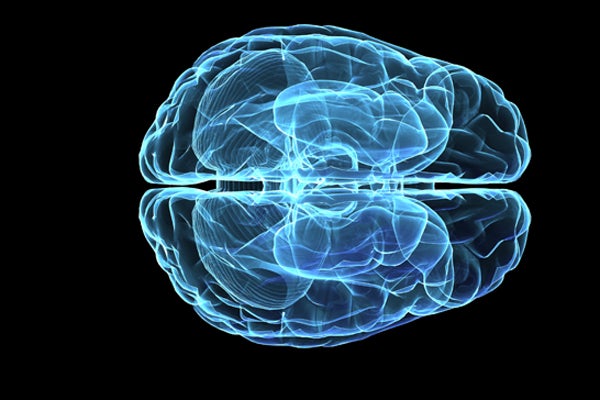|
August 28, 2014
Stanford engineer helps determine how the brain learns new tasks
The research reveals the neural basis for why learning new tasks can be difficult, and could lead to improved therapies for stroke and other brain injuries. By Bjorn Carey

Stanford engineering Professor Stephen Ryu is co-author of a Nature article on how the brain learns new skills. (Photo / Shutterstock)
Scientists from Carnegie Mellon University, the University of Pittsburgh and Stanford have discovered a fundamental constraint in the brain that may explain why a person has a relatively easier time learning a new skill if it's related to an ability he has already mastered.
Published in this week's Nature, the research details for the first time that there are limitations on how adaptable the brain is during learning, and that these restrictions are a key determinant for whether a new skill will be easy or difficult to learn.
Understanding the ways in which the brain's activity can be "flexed" during learning could eventually be used to develop better treatments for stroke and other brain injuries.
"This gives insight into the neural basis for the limitation on learning new things," said co-author Stephen Ryu, a consulting professor of electrical engineering at Stanford and a neurosurgeon at the Palo Alto Medical Foundation. "One of the clinical implications is that it may provide a more intelligent way to train new cognitive tasks."
The neural basis of learning
The research team trained animals to use a brain-computer interface (BCI), similar to ones that have shown promise in clinical trials for assisting quadriplegics and amputees. The multi-electrode array recorded activity from dozens of neurons in the animal's motor cortex. A computer translated the neural firings to move a cursor on the computer screen.
"This evolving technology is a powerful tool for brain research," said Daofen Chen, program director at the National Institute of Neurological Disorders and Stroke (NINDS), part of the National Institutes of Health, which supported this research. "It helps scientists study the dynamics of brain circuits that may explain the neural basis of learning."
The researchers paired specific activity patterns to targeted cursor movements; successfully matching the target indicated that the animals had learned to generate the correct neural activity pattern. The scientists then switched up the target and gauged how quickly and accurately the animals could pick it up.
The animals showed a range of accuracy in moving the cursor, with poorer results linked to increased novelty of the task.
The harder-to-learn patterns were different from any of the pre-existing patterns, whereas the easier-to-learn patterns were combinations of pre-existing brain patterns.
The scientists were able to observe that when brain activity associated with a target pattern occurred within a "well-exercised" subspace of the motor cortex, the animal performed much more proficiently at the task than when activity occurred in a different area. Because the existing brain patterns likely reflect how the neurons are interconnected, the results suggest that the connectivity among neurons shapes learning.
"We found that subjects were able to more readily recombine familiar activity patterns in new ways relative to creating entirely novel patterns," said lead author Patrick T. Sadtler, a doctoral candidate in Pitt's Department of Bioengineering
"We wanted to study how the brain changes its activity when you learn, and also how its activity cannot change," said Aaron P. Batista, an assistant professor of bioengineering at Pitt. "Cognitive flexibility has a limit – and we wanted to find out what that limit looks like in terms of neurons."
Designing better therapies
This work also demonstrates the utility of BCI for basic scientific studies that will eventually affect people's lives.
"These findings could be the basis for novel rehabilitation procedures for the many neural disorders that are characterized by improper neural activity," said co-author Byron M. Yu, an assistant professor of electrical and computer engineering and biomedical engineering at Carnegie Mellon. "Restoring function might require a person to generate a new pattern of neural activity. We could use techniques similar to what were used in this study to coach patients to generate proper neural activity."
For a patient recovering from a stroke, who must relearn established tasks and behaviors, Stanford's Ryu said, therapists could tailor treatments around what the patient had known or re-teach skills based on related activities. This could potentially help the patient recover more quickly, and with better results, compared to current therapies.
It could also have implications in more mundane forms of education. Ryu used tennis as an example:
"If you're learning tennis, and all you've learned is a forehand, instead of going to backhand next, as is traditional, you work on forehand volleys," Ryu said. "It seems relatively obvious, but this is the first objective evidence of the neural basis that if you have the building blocks of certain behaviors, it is easier to learn tasks versus more novel tasks."
The next steps in the research, Ryu said, will likely involve assessing the limits of how quickly and fully new cognitive skills can be learned at a neural level.
-30-
|